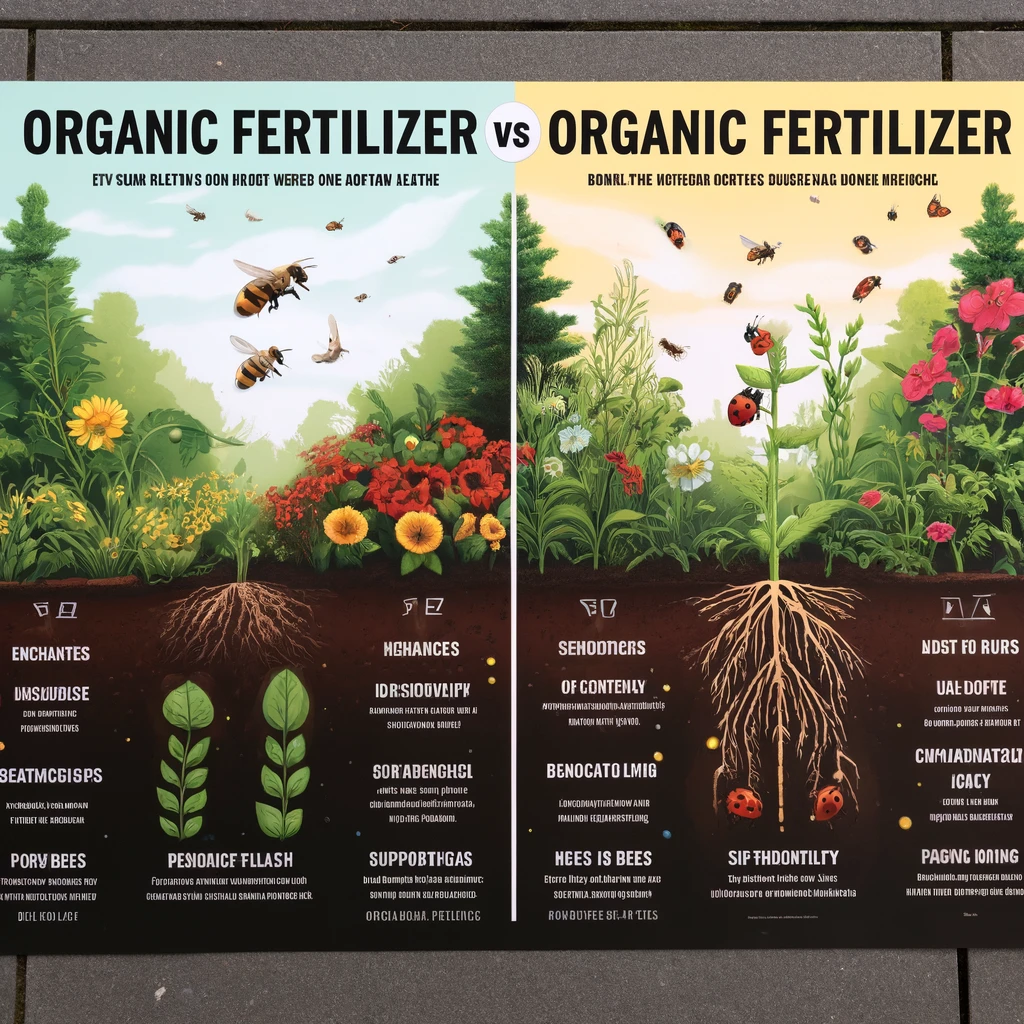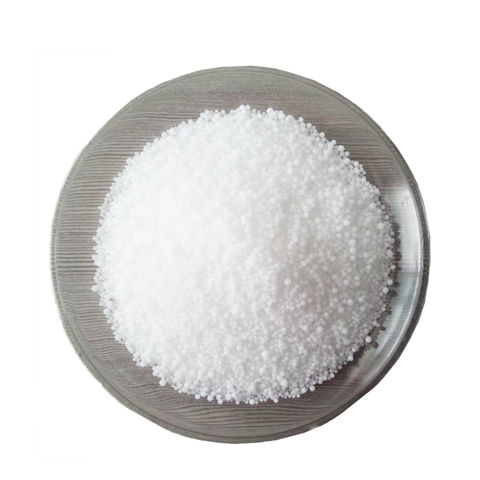Introduction
Organic high nitrogen fertilizer is a must have for every gardener and farmer who wants to help their crops grow strong and healthy. It’s one of the most important fertilizers for gardeners and farmers because of its high nitrogen content: an essential nutrient for plants, nitrogen is an important component in chlorophyll, and chlorophyll is what affords plants their verdant hue but above all, more importantly for the plant, it’s the molecule needed for photosynthesis, allowing plants to convert ambient sunlight into the energy they need for growth.
The need for nitrogen remains high across the life of the plant, but is especially important early in the life of a crop, when green, photosynthetically active mass is growing, say scientists such as Helen Brooks, a leading agronomist with an expertise in sustainable agriculture: ‘Nitrogen is critical to plant growth. As a major component of amino acids, it is half, by molecular weight, of all proteins, so it literally goes everywhere – from the enzymes that do the work in the myriad of metabolic functions in plants to tissue development to plant health.’
Accepting that implies making choices, particularly choices for which nitrogen is required, and using only organic sources of it to feed soil life – and plants. As with every other nutrient that people apply to plants, the release of nitrogen from fertilizers, whether organic or synthetic, depends on many factors: the material, the specific environment into which it’s applied, the amount that’s applied, and so on. It seems likely that, on average, the nitrogen released from organic fertilizers does so more slowly and evenly than does nitrogen from synthetic fertilizers, reducing the risk of over-fertilisation and nutrient leaching from the soil into waterways. The slow-release process also helps to keep nutrients available over long periods.
In this growing guide we will look at organic high nitrogen fertilizer and how you can use it to improve plant health and yield; explore the uses and benefits of organic high nitrogen fertilizer; also how to apply the fertilizer effectively so that it not only improves crop yield but contributes positively to a healthy ecosystem without compromising sustainable gardening and farming practices. fertilizer not only increases plant growth, they also provide many benefits to your entire ecosystem.
Benefits of Using Organic High Nitrogen Fertilizer
The use of organic high nitrogen fertilizer offers significant advantages for enhancing plant health, which in turn contributes to more bountiful and vigorous plant growth. Understanding how high nitrogen content affects plants can help gardeners and farmers make informed decisions about their fertilization practices.
Nitrogen is a critical component of chlorophyll, the molecule in plants that is responsible for the green color of their leaves and is essential for photosynthesis. By providing a high level of nitrogen, organic high nitrogen fertilizer supports faster and more robust plant growth, leading to an increase in the greenness and density of the plant foliage. This not only improves the overall health and appearance of the plants but also enhances their ability to produce energy and grow.
Dr. Emily Fields, an expert in plant nutrition, explains, “Nitrogen accelerates vegetative growth, which is crucial for plants in their early growth stages and during the spring when plants are preparing to bloom and set fruit. An adequate supply of nitrogen ensures that plants have the energy to support these processes.”
Opting for organic high nitrogen fertilizer has distinct environmental benefits over synthetic alternatives. Organic fertilizers are derived from natural sources such as animal manures, compost, or plant residues, which integrate seamlessly into the natural cycle and support soil health. These materials improve the soil structure and increase its water retention capabilities, which is crucial for sustainable agriculture.
Moreover, because organic fertilizers release nutrients more slowly, they are less likely to leach into water systems, reducing the risk of pollution and helping to preserve aquatic ecosystems. Using organic fertilizers helps maintain the natural biodiversity of the soil, promoting a balance of microorganisms that support healthier plants and environments,” adds Dr. Fields.
Organic high nitrogen fertilizer not only feeds the plant but also nourishes the soil. As these fertilizers break down, they add organic matter to the soil, which is beneficial for improving soil structure and fertility over time. This process encourages the activity of beneficial microorganisms, which play a key role in nutrient cycling, further enhancing soil health and plant growth.
By using organic high nitrogen fertilizer, gardeners and farmers do not just benefit their crops but also contribute to a healthier environment, supporting sustainable agricultural practices that ensure long-term productivity and ecological balance.

Selecting the Right Organic High Nitrogen Fertilizer
Organic high nitrogen fertilizer is used to drive your plant to have good growth and health. There are many factors to be sure about when choosing an organic material that will be a sustainer for your plants. There are different nitrogen materials and environmental conditions in gardens or farms; it matters a lot when choosing the right one.
Factors to Consider
- Nitrogen Content: When looking at the percentage of nitrogen in a product, it is important. Fertilizers that have a high percentage of nitrogen in them are much better for fast-growing or green heavy plants. Moss, for instance, requires a high percentage content of nitrogen to thrive.
- Source of Nitrogen: Organic fertilizers can derive their nitrogen from various sources:
- Animal-based: Such as blood meal, which is high in nitrogen and fast-acting.
- Plant-based: Such as soybean meal, which is released more slowly into the soil and less likely to ‘burn’ plants with too many nutrients.
- Soil Compatibility: Be certain it is correct for your soil type. Faster draining soils may need weekly or bi-weekly applications of slow-release nitrogen in order to avoid leaching, while clay-type soils could benefit from less frequent applications.
Recommendations for Specific Types
- Blood Meal: A wonderful source of nitrogen that is quickly available and excellent for increasing the growth of leafy plants. Perfect for plants requiring a nutrient hit.
- Feather Meal: Slower to release, feather meal is the choice for plants that benefit from sustained release of growth over a season. This provides a more steady supply of nitrogen.
- Fish Meal: It is a ‘complete’ fertilizer containing up to half of its dry weight as nitrogen, as well as the plant-essential nutrients phosphorus and potassium.
Expert Advice
“Think about where your plants are in their life cycle,” says Susan Carter, a soil scientist and a member of our team of in-house experts. “Young plants or if things are growing fast, you really want to put some nitrogen on.” Established plants might do just as well with balanced fertilizer that features nitrogen, too.
In addition, make sure that the product has certification to confirm that it is grown without chemical fertilizers and additives, or synthetic compounds. The certification will also ensure that the product is grown in an organically sustainable manner that supports greater environmental standards and your product is truly organic.
If you choose an appropriate organic high nitrogen fertilizer that contains these factors, you can feed your plants to ensure healthy growth while using environmentally sound gardening and farming practices.
Application Techniques and Best Practices
When applied in the right amounts and in the right way, formulations of organic high nitrogen fertilizer can help to maximize the potential positive effects of nitrogen for plant growth and vigor without causing damage to plants from the unsafe impacts of over-fertilization, such as nutrient runoff or fertilizer ‘burn’.
Guidelines on How to Correctly Apply Organic High Nitrogen Fertilizer
- When to Apply: If you want maximum benefit for lush green growth, apply high nitrogen fertilizer early in the growing season when plants are putting on new growth. For perennials, that will be at the beginning of the spring growth cycle; for annuals and vegetables, apply either just before planting, or soon after first development.
- Method of Application:
- Immediate Application: Apply the fertilizer equidistantly around the base of the plant, away from the leaves and stems so as not to burn it since the roots are the access point for absorption.
- Tilling In: For beds with new plants, work the fertilizer into the top layer of the soil before planting so the nutrients will be evenly dispersed and readily available to the new roots. For well-established plants, gently dig in the fertilizer in the top layer of soil without disturbing the roots.
Tips on Timing and Frequency of Application
- Regular Feeding: High nitrogen fertilizers are usually applied more often than others, because nitrogen would be leached quickly from soil. So regular applications every 4-6 weeks during the season could maintain optimal growing.
- Observational Adjustments: Watch your plant’s response after fertilizing. If you see signs of over-fertilizing, such as burnt and yellow leaves, then you have to fine-tune the amount or the interval between your applications.
Best Practices to Avoid Common Pitfalls
- DO NOT OVER-FERTILIZE: Avoid applying too much nitrogen, which would lead to excessive green growth at the expense of flowering and fruiting, and possible environmental problems such as nutrient runoff.
- Water After Application: Water the soil after applying dry fertilizers to dissolve nutrients by the water and to prevent burning plant roots.
Expert Insights
Fine-tuning of fertilizer is more critical than many realize. This precision is very clear to the plant physiologist Emily Gray: “The quantity and quality of nutrient must be balanced carefully, applying at the optimal time. Too much nutrient will burn the plant and cause environmental problems, and too little will restrict plant growth. Use soil tests and plant growth indices to guide your rate of application.”
If implementing these application techniques and best practices, organic high nitrogen fertilizer is going to provide all the benefits of fertilization, both higher yield and sustainable plantation system.

Monitoring and Adjusting Fertilization Practices
However, considering that ideal fertilization in organic farming with exceptionally high nitrogen fertilizers can prolong throughout the day, as they are applied directly to the plants every day, this necessitates constant monitoring and adjusting to keep the various indicators of plant growth and ecological safety within desirable levels.
Methods for Assessing the Impact of Fertilization
- Regular Soil Testing: Nutrient levels can be measured periodically to ensure that the previous fertilization strategy was effective. Regular use of soil test results gives a very precise evaluation of nitrogen and other nutrient availability, and then fertilizer applications are planned to match the needs of the soil and the plants.
- Monitoring Plant Physical Condition: Monitoring their plant’s physical condition gives direct feedback on the nutritional status of the plants. A good indicator of proper fertilization is rapid, vigorous growth; a good green color to the leaves; and abundant, well-shaped fruit. By contrast, yellowing, unthrifty growth, or overproductive leaves at the expense of the fruit indicate a deficiency, which needs to be corrected.
Strategies for Adjusting Fertilization Practices
- Environmental Factors: Rainfall or temperature have the potential for changing irrigation patterns which changes the uptake of nutrients and the leaching of nutrient from soil. Scheduling fertilization to environmental changes help to ensure the provision of proper nutrients at the proper time for plants.
- Plants Telling Me Whether We’re On The Right Track: The strongest indicator of whether the current feeding strategy is on the right track is whether the plants themselves are responding in a positive fashion. Are there signs that one or more elements have been over-applied, such as salt build-up on foliage, leaf necrosis or blotching, or foliar burn on sensitive crops? On the other hand, are there signs that something is lacking? Perhaps the plants are showing yellowing between the leaf veins or general signs of chlorosis or browning and drying of new leaf growth. If new symptoms appear, the program should be adjusted.
- Other Experts: Because of the wide range of variables possible, consulting with agricultural extension services or consultants is often helpful in tailoring fertilization for local conditions. Extension services work within state agencies to offer research-based information to farmers, and some focus specifically on organic practices, following the most recent research findings.
Continuous Improvement
By monitoring and adjusting fertilization strategies, we improve plant health and productivity while avoiding excesses and environmental pollution, becoming better stewards of resources to achieve a more circular bioeconomy.
“Adapting fertilization to repeated evaluations is essential,” says Dr. Lisa Hamilton, a research fertility scientist at the World Agroforestry Centre, based in Nairobi, Kenya. “For truly sustainable agriculture, it optimizes plant health and productivity, while simultaneously minimizing environmental impacts.”
With routine check-ins on plant health and soil properties, and in-season management of fertilizer choices, gardeners and farmers who use organic high nitrogen fertilizers can keep their nutrient contributions on track and efficient, with minimal impact on the environment. Gardeners and farmers manage plants through focused observation and management of soil properties that, in turn, feed their plants. It is these types of attentive relationships that respond to the immediate and dynamic needs of plants in order to produce the best crop, while remaining within the bounds of beneficial ecological functionalities.
Conclusion
In conclusion, when we take good care of plants, and grow plants strategically by using good organic high nitrogen fertilizer, we are actively improving plant health. With the correct organic fertilizer in the right proportions, we can help plants grow better in our garden to produce healthier plants.
In addition to higher plant yields, use of organic high nitrogen fertilizer improves the sustainability of agricultural practices by supporting the health of the soil and eliminating the environmental impact commonly associated with synthetic alternatives. Unlike synthetics, the longer lasting nutrient release typically found in organic fertilizers ensures ample, balanced plant nutrition that is unlikely to be leached or run off and become a pollutant.
Besides, an organic approach is in line with general environmental aims, such as preserving biodiversity and conserving ecological equilibrium. When using natural fertilizers, much higher numbers of naturally growing organisms that live in the soil and help with natural growth processes and enhancing soil fertility are present.
And as this guide emphasises, the best way to improve chances of success when using organic high nitrogen fertilizers is to carefully choose the most appropriate sources, apply it in optimal ways, and test and take corrective actions based on what plants are telling us, and what the plant needs in terms of nitrogen in response to prevailing conditions. This way, production agriculture becomes more sustainable.
As Emily Fields, a postdoc who works in sustainable agriculture at Tufts University in Massachusetts, put it: ‘Adding organic high nitrogen fertilizers in your growing strategy helps not only plant growth but also means you are embracing management practices that respect and enrich the environment for future human generations.
In the end, sweet success means organic high nitrogen fertilizer for all those seeking to make their plants grow better and healthier towards higher yields and positively contribute to the environmental stewardship of green and sustainable agriculture. For those simple steps to achieve said sweet success, read the guidelines and tried and tested procedures outlined above. your plants will certainly love you for that.
Here’s a list of references that provide valuable information on organic high nitrogen fertilizer:
- Organic Materials Review Institute (OMRI) – Provides a searchable database of products that are certified organic and suitable for use in organic agriculture, including high nitrogen fertilizers.
- The Organic Center – Conducts research on the benefits of organic agriculture practices, including the use of organic fertilizers in enhancing crop yield and soil health.
- Garden Organic – A leading organic gardening organization that offers advice on organic fertilizing practices, with a focus on high nitrogen options. Fertilizers
- ResearchGate – A platform where numerous scientific papers and research articles on the effectiveness of organic high nitrogen fertilizers in agriculture can be found.







